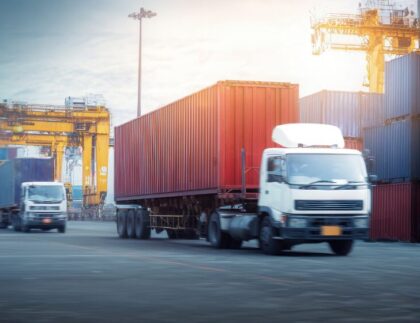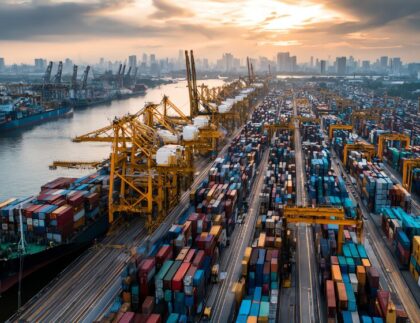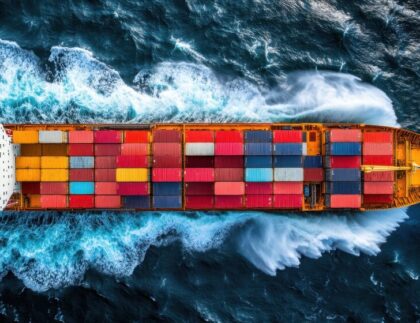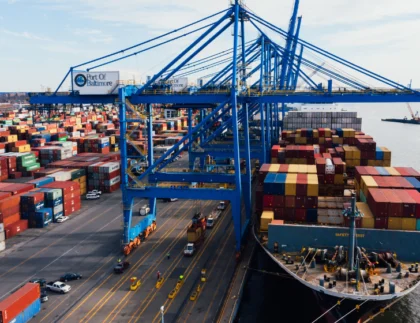
In a logistics landscape long dominated by containerization, breakbulk shipping is making an unexpected yet powerful comeback. As global trade adjusts to the demands of renewable energy projects, large-scale infrastructure, and specialized cargo, project cargo logistics is emerging as one of the fastest-growing segments in maritime transport.
In 2025, industries that rely on oversized freight forwarding and heavy-lift vessel demand are driving this resurgence, with breakbulk becoming the go-to solution for complex cargo needs.
Breakbulk Shipping Trends in 2025
Breakbulk shipping refers to transporting goods that cannot be containerized due to their size, shape, or weight. While container shipping remains the backbone of global trade, the industry has witnessed new breakbulk shipping trends reshaping its value proposition.
Firstly, the push for renewable energy equipment shipping—such as wind turbine blades, nacelles, and transformers—is fueling unprecedented demand. These components are simply too large for standard containers, requiring specialized cargo handling and customized logistics planning.
Secondly, the growing pace of urbanization is boosting construction machinery transport. Bulldozers, cranes, and tunneling machines need to be shipped intact, reinforcing the need for breakbulk services.
Finally, the rise of emerging market project cargo is a strong driver. Countries in Africa, Southeast Asia, and Latin America are investing heavily in infrastructure and energy projects. Their demand for imported heavy machinery and power-generation equipment makes breakbulk indispensable.

The Heavy-Lift Vessel Factor
Another major force behind this shift is heavy-lift vessel demand. Unlike container ships, heavy-lift vessels are equipped with specialized cranes capable of handling oversized and overweight cargo directly at port. This reduces dependency on shore-based equipment and minimizes delays.
In 2025, shipping companies are expanding fleets of multipurpose and heavy-lift vessels to meet rising global needs. Charter rates for these ships have climbed steadily, reflecting their growing strategic importance. For project cargo logistics, the availability of heavy-lift vessels can be the deciding factor in whether a project stays on schedule.
Breakbulk vs Container Shipping
It’s tempting to think of breakbulk as an outdated alternative to containerization, but in reality, the two are complementary. Container shipping excels at moving high-volume standardized goods, but it falls short when faced with out-of-gauge cargo. Breakbulk, on the other hand, thrives in situations where flexibility, customization, and strength are required.
While containers maximize efficiency, breakbulk optimizes feasibility. For example, a single wind turbine blade measuring more than 100 meters cannot be cut or modified to fit inside a container—it must travel as-is, making breakbulk shipping the only practical solution.

Specialized Cargo Handling and Infrastructure
Handling breakbulk shipments demands more than just vessels; it requires highly skilled personnel and specialized equipment. From precision lifting of transformers to the safe lashing of construction machinery, expertise in cargo handling ensures safety and efficiency.
Ports, too, are adapting. Investment in port infrastructure for breakbulk is expanding globally, with terminals adding stronger quays, heavy-duty cranes, and dedicated storage yards. Many ports in emerging markets are positioning themselves as breakbulk hubs to capture regional demand.
Renewable Energy as a Catalyst
If there’s one sector defining the surge of breakbulk shipping, it’s renewable energy. Governments and corporations alike are investing heavily in offshore wind farms, solar parks, and hydroelectric projects. Shipping wind turbine components, solar inverters, and large transformers requires customized logistics solutions that only breakbulk shipping can provide.
This trend is particularly strong in Europe and Asia, where offshore wind projects are scaling up. North America is catching up quickly, with the U.S. and Canada investing in both wind and solar infrastructure. The sheer size and fragility of renewable energy equipment make breakbulk shipping a critical enabler of the green transition.
Emerging Market Project Cargo
In addition to renewable energy, emerging markets are creating a surge in demand for project cargo logistics. Developing economies are modernizing power grids, building airports, and constructing new transportation corridors. These projects depend on the import of turbines, boilers, and specialized construction equipment.
For many of these regions, breakbulk shipping is not just an option but a necessity. Container ports may lack the facilities to handle oversized cargo, while breakbulk-friendly terminals are better equipped to manage such shipments. This has created opportunities for global carriers to partner with local logistics providers, expanding service networks and capacity.
The Outlook for 2025 and Beyond
Looking ahead, breakbulk shipping is poised for sustained momentum. As heavy-lift vessel demand continues to grow, shipping companies will prioritize multipurpose fleets capable of handling diverse project cargo needs. The ongoing renewable energy boom, coupled with large-scale construction and industrial projects, ensures consistent cargo flow for years to come.
At the same time, ports and logistics providers are innovating with digital tracking, AI-driven load planning, and greener handling practices to make breakbulk shipping safer, faster, and more sustainable.

Conclusion
Breakbulk shipping may have once been overshadowed by containerization, but in 2025, it is proving indispensable for industries tackling some of the world’s most ambitious projects. From renewable energy equipment shipping to construction machinery transport, project cargo logistics is no longer a niche—it is a driving force in global trade.
As emerging markets expand and the world transitions to cleaner energy, the demand for oversized freight forwarding will only intensify. With specialized cargo handling, upgraded port infrastructure for breakbulk, and a new wave of heavy-lift vessels, breakbulk shipping is not just gaining momentum—it is cementing its role as a cornerstone of modern logistics.











